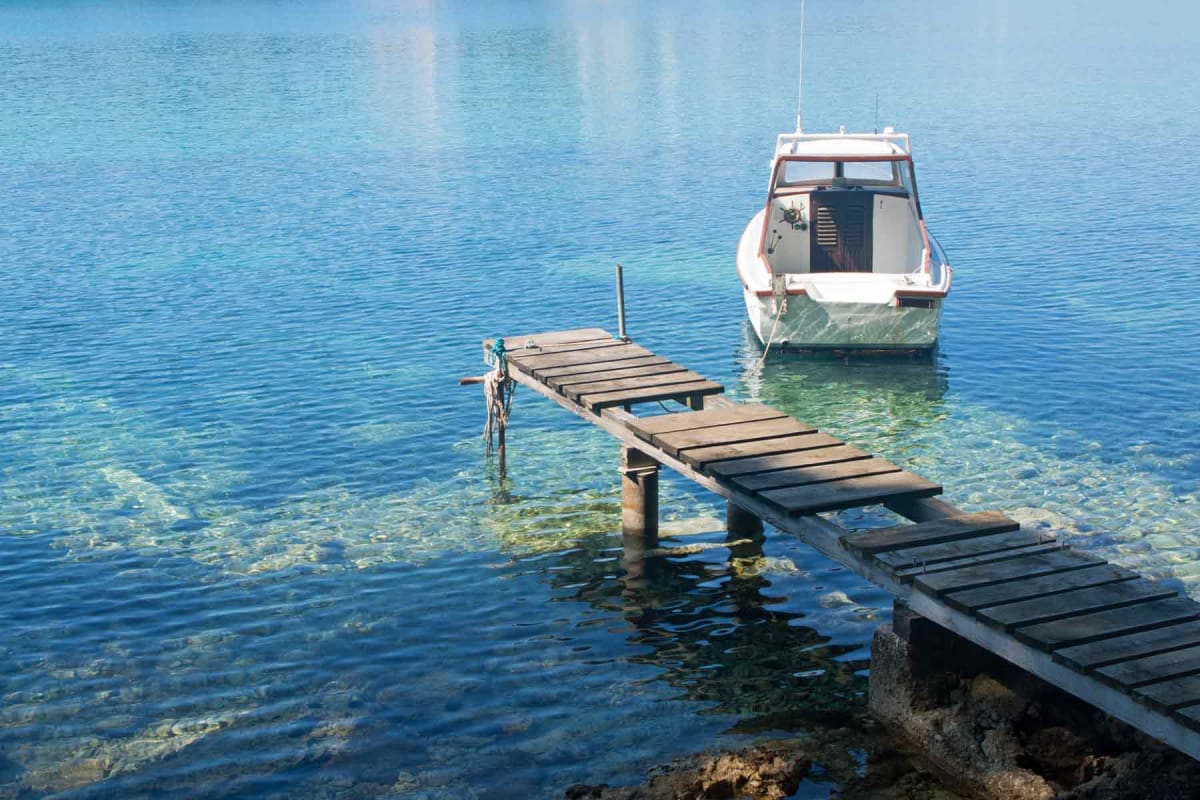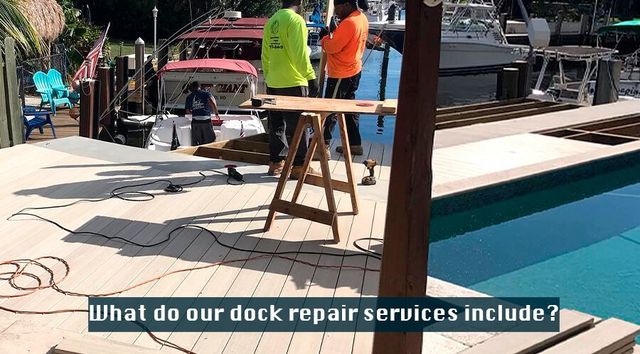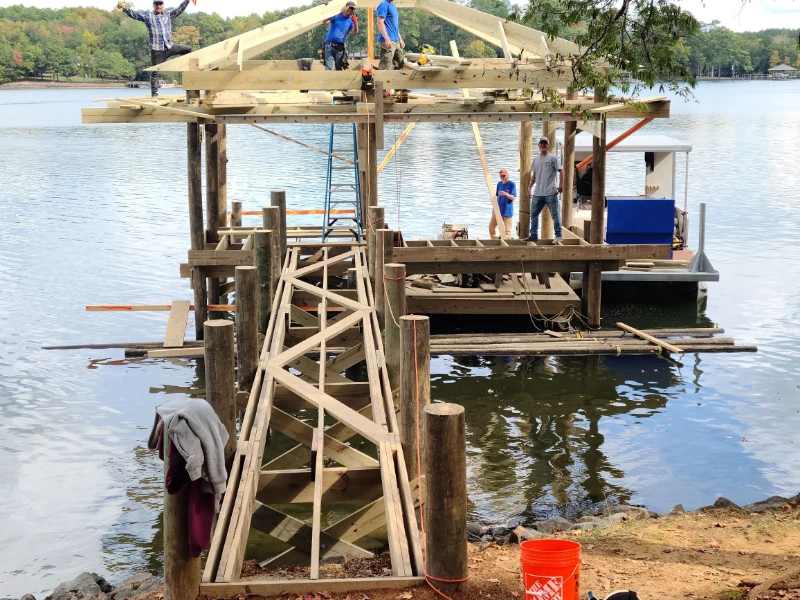DIY Tips for Simple Dock Repairs You Can Handle
DIY Tips for Simple Dock Repairs You Can Handle
Blog Article
Reliable Dock Fixing Techniques: Ensuring Structural Stability
Guaranteeing the architectural honesty of docks with reliable repair methods is critical for the durability and safety and security of aquatic centers. This involves a multi-faceted strategy beginning with detailed examinations utilizing sophisticated technologies like finder tools and remotely ran automobiles (ROVs) to spot both visible and hid damages. Consequently, picking the appropriate repair service products, such as corrosion-resistant alloys and composite products, is vital for resilience. Architectural reinforcement techniques, consisting of the application of cross-bracing systems and load-distribution plates, play an essential duty in mitigating anxiety points. The importance of these techniques ends up being evident when discovering advanced repair work methods and preventative maintenance methods.
Analyzing Dock Damage
Assessing dock damages is a critical very first step in making sure the structural integrity and security of any kind of docking center. This initial examination includes a detailed inspection to recognize both surprise and visible damages. Trick facets to examine include the dock's foundation, pilings, outdoor decking, and equipment. Each component must be inspected for indications of wear, rot, rust, or other kinds of deterioration that could endanger the structural integrity.
Architectural engineers or qualified assessors generally execute these assessments making use of specialized tools and strategies. For instance, undersea examinations might utilize sonar equipment or remotely ran vehicles (ROVs) to discover submerged damages. Over water, visual assessments are enhanced by making use of dampness meters and various other diagnostic tools to reveal underlying problems not immediately visible to the naked eye.

Deciding On Repair Products
Picking the appropriate fixing materials is a critical action in the dock repair process, one that directly influences the durability and efficiency of the fixed framework. Product option have to be driven by variables such as environmental problems, load-bearing demands, and compatibility with existing dock components. Timber is a typical selection for anchors due to its natural resilience and aesthetic appeal. Picking the right kind of wood, such as pressure-treated lumber or naturally rot-resistant types like cedar or teak wood, is crucial to withstand marine environments.
Along with wood, composite materials are significantly popular due to their longevity and low upkeep needs. Compounds, usually made from a mix of plastic and timber fibers, offer outstanding resistance to rot, insects, and UV damage. For metal anchors, choosing corrosion-resistant alloys such as galvanized steel or marine-grade aluminum is vital to prevent corrosion and make certain architectural honesty in saline water problems.
Epoxy resins and marine-grade sealants are indispensable for repairing fractures and sealing joints, giving a waterproof obstacle and enhancing the dock's total toughness. By diligently picking high-quality products, dock repair work can attain lasting outcomes, consequently securing versus future deterioration and ensuring risk-free, reliable use.
Structural Support Strategies
Effective architectural reinforcement methods are vital in guaranteeing the security and long life of dock fixings. One essential technique involves the usage of steel or composite support bars (rebar) within concrete frameworks. Rebar offers added tensile stamina, avoiding cracks and distributing loads extra equally. This technique is specifically effective for anchors exposed to hefty tons or harsh ecological conditions.
Another crucial technique is the application of fiber-reinforced polymers (FRP) These products offer high strength-to-weight proportions and exceptional resistance to deterioration, making them suitable for enhancing wood or concrete docks. FRP can be applied in strips or sheets and bound with epoxy materials to improve structural stability.
Bracing and securing systems likewise play an essential duty in architectural reinforcement. Cross-bracing, utilizing metal or wood beams, can counteract side pressures, lowering swaying and activity. Anchoring systems, such as helical piers or driven stacks, supply a steady structure by moving loads to much deeper, a lot more secure dirt layers.
Lastly, the combination of load-distribution plates can aid disperse weight much more evenly across the dock's surface area, reducing localized tension points. These techniques jointly make certain that anchors remain durable and safe, capable of holding up against the rigors of their operational atmosphere.
Advanced Repair Work Approaches

Another advanced strategy includes undersea welding, which permits repair work to be performed without the demand to dewater the location. This technique is particularly beneficial for attending have a peek at this site to structural concerns in submerged dock components, guaranteeing marginal disruption to operations. Enhanced welding strategies, coupled with robot systems, deliver precision and integrity, therefore expanding the life expectancy of the dock.
In addition, cathodic defense systems are carried out to protect against rust in metal dock frameworks. By utilizing sacrificial anodes or satisfied present systems, these methods efficiently alleviate the electrochemical processes that bring about product degeneration.
Finally, advanced website link surveillance modern technologies, such as architectural health and wellness surveillance (SHM) systems, supply real-time data on the condition of dock structures. These systems make it possible for proactive upkeep and timely treatments, inevitably ensuring the long-lasting structural honesty of the dock.
Maintenance and Prevention
Maintenance and avoidance are basic concepts that underpin the long life and safety and security of dock structures. Regular assessments are vital, enabling very early discovery of wear and tear, possible weak points, and environmental effects. A proactive approach, involving routine checks for rust, rot, and structural changes, minimizes expensive repair work and lengthens the dock's functional life.
Preventive procedures should consist of applying protective coverings to metal parts to defend against rust and utilizing cured wood to withstand degeneration. Furthermore, guaranteeing correct drain and air flow can prevent water buildup, which is a typical root cause of architectural degradation. Integrating high quality products and adhering to producer standards throughout building and repair work phases also play essential duties in enhancing toughness.

Educating workers in dock read what he said maintenance finest methods makes certain consistent application of safety nets. Leveraging technological developments, such as drones for assessments and sensing units for real-time surveillance, can further enhance maintenance efforts. By focusing on maintenance and avoidance, dock owners can ensure architectural integrity, functional safety, and cost-effective administration over the dock's life expectancy.
Conclusion
Finally, preserving the architectural honesty of aquatic centers necessitates extensive dock repair work methods. Thorough examinations utilizing advanced devices reveal both noticeable and hid problems, while the choice of proper repair service products improves sturdiness. Executing architectural reinforcement methods addresses tension points successfully. Advanced fixing methods, combined with normal upkeep techniques, make certain the dock continues to be risk-free and functional under diverse environmental conditions. Taking on these approaches significantly extends the life expectancy and capability of marine framework.
Making sure the architectural honesty of docks with effective repair service techniques is paramount for the long life and safety and security of aquatic centers.Picking the proper fixing materials is a crucial step in the dock remediation process, one that directly influences the long life and performance of the fixed structure.Reliable structural reinforcement techniques are essential in making sure the stability and longevity of dock repair work. By focusing on upkeep and avoidance, dock owners can make sure structural honesty, functional safety, and cost-effective monitoring over the dock's life expectancy.
In final thought, keeping the architectural honesty of marine facilities demands extensive dock fixing methods.
Report this page